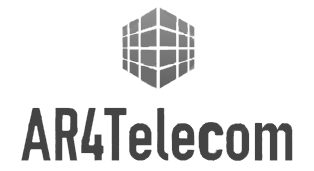
-
StatusCompleted
-
Status date2018-11-29
-
Activity Code4A.058
The main goal of AR4Telecom was to build Augmented Reality tools (SW&HW) that could help procedures designers, operators and QA to deal with the demanding requirements and tasks regarding AIT/V activities. These tools can be used for:
- Planning the assembling procedures gathering together all the needed information for each task to be performed (work instructions, plans, pictures, tools needed, personnel protective equipment, etc.);
- Guide the operators on clean rooms in the assembling tasks providing contextual information, such as CAD models and other media content, on top of what they see;
- Assist inspectors on the verification and registering of tasks, such as checking requirements and collecting evidences from work accomplished.
At the end, significant improvements regarding the productivity of the teams involved and quality of the assemblies were achieved. A roadmap for future developments was also assessed in the light of the results achieved and delivered.
Understand and abstract the processes and tasks involved in AIT activities. Build tools, flexible enough, to accommodate these disparate activities from, as much as possible, available COTS components (SW&HW). Support different and future AR devices. Testing the tools developed on a realistic environment (clean room) with experienced AIT/V operators.
Ability to access contextual and localized visual information on top of the users/operators field of view. Enforce best practices and work instructions. Easy and effective training for new operators. Automatic registering of work accomplished. Retrieval of information from AIT activities after procedures execution. Reuse of procedures components (templates). Faster reaction to and automatic routing of non-conformities. Preview of assembling steps.
Support for Microsoft HoloLens and Epson Moverio BT-300 and flexibility regarding new devices. Easy building of new procedures. Hands free (gesture controls and clicker available). Ability to scan QR Codes that include information from different devices or tool IDs and use that to guide the user flow. Support for PDF, videos, pictures, etc. Resume of incomplete executions. 3D native based. Adaptable to other industries and work flows. Traceability of work performed (who, when, what, etc.).
The set of tools now available is mainly composed of a:
- Authoring Tool (desktop application) that enables AIT procedures’ designers to assemble a digital AR based procedure containing all the relevant resources (CAD models, step-by-step instructions, pictures, documents, videos, etc.) needed for a contextual execution of the tasks to be performed to achieve a successful and complete assembling of a physical counterpart (a panel, for instance).
- Player (AR application) that runs on a AR device, such as HoloLens, capable of reading procedures made on the Authoring Tool and interactively guide and help its user through the tasks and steps needed to achieve the goal of the procedure, registering, at the same time, all the required information for traceability purposes.
- Reporting Tool (desktop application) that reads the records registered by the Player on an execution of a procedure of a physical panel and presents this information (such as, who assembled and when was the task done, part number, etc.) on a human readable format for traceability purposes.
The diagram below summarizes the general flow and interconnectivity between the different main parts of the AR4Telecom solution, along with the designated interacting personnel.

Kick-off – July 2016
Baseline Design Review – March 2017
Mid-term Assessment – July 2017
Test Readiness Review – March 2018
Test Review Board – June 2018
Final Review – November 2018
The project was tested on a realistic environment with experienced AIT personnel and delivered with all requirements met and goals achieved. A roadmap for future developments was assessed and delivered. The next developments are proposed to be focused on integration along all the AIT processes, from design to AIT finalization, generic systems integration, UX and UI improvements, among other findings.




